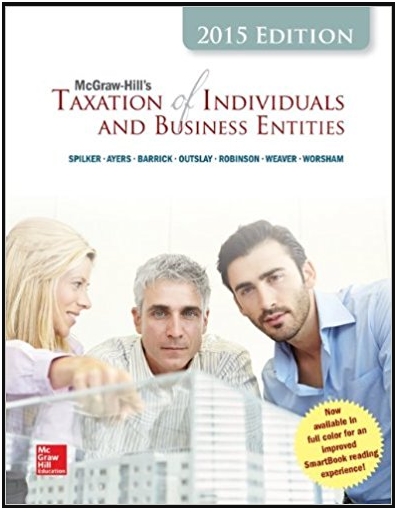Jack, a geologist, had been debating for years whether or not to venture out on his own
Question:
a. In January GJ rented a small business office about 12 miles from Jack's home. GJ paid $10,000 which represented a damage deposit of $4,000 and rent for two years ($3,000 annually).
b. GJ earned and collected $290,000 performing geological-related services and selling its specialized digging tool [see part (i)].
c. GJ received $50 interest from municipal bonds and $2,100 interest from other investments.
d. GJ purchased some new equipment in February for $42,500. It claimed depreciation on these assets during the year in the amount of $6,540.
e. GJ paid $7,000 to buy luxury season tickets for Jack's parents for State U. football games.
f. GJ paid Jack's father $10,000 for services that would have cost no more than $6,000 if Jack had hired any other local business to perform the services. While Jack's dad was competent, he does not command such a premium from his other clients.
g. In an attempt to get his name and new business recognized, GJ paid $7,000 for a one-page ad in the Geologic Survey. It also paid $15,000 in radio ads to be run through the end of December.
h. GJ leased additional office space in a building downtown. GJ paid rent of $27,000 for the year.
i. In August, GJ began manufacturing a special geological digging tool that it sells to wholesalers. GJ's QPAI from the activity for the year is $100,000 [included in revenues reported in part (b)]. GJ paid $10,000 of wages to the employees working on the project during the year and its cost of goods sold on the sales is $15,000. (Assume that taxable income does not limit the amount of the DPAD and that no wages should be included in cost of goods sold.) Remember that cost of goods sold and wages reduce taxable income.
j. In November, Jack's office was broken into and equipment valued at $5,000 was stolen. The tax basis of the equipment was $5,500. Jack received $2,000 of insurance proceeds from the theft.
k. GJ incurred a $4,000 fine from the state government for digging in an unauthorized digging zone.
l. GJ contributed $3,000 to help lobbyists for their help in persuading the state government to authorize certain unauthorized digging zones.
m. On July 1, GJ paid $1,800 for an 18-month insurance policy for its business equipment. The policy covers the period July 1of this year through December 31 of next year.
n. GJborrowed $20,000 to help with the company's initial funding needs. GJ used $2,000 of funds to invest in municipal bonds. At the end of the year, GJ paid the $1,200 of interest expense that accrued on the loan during the year.
o. Jack lives 12 miles from the office. He carefully tracked his mileage and drove his truck 6,280 miles between the office and his home. He also drove an additional 7,200 miles between the office and traveling to client sites. Jack did not use the truck for any other purposes. He did not keep track of the specific expenses associated with the truck. However, while traveling to a client site, Jack received a $150 speeding ticket. GJ reimbursed Jack for business mileage and for the speeding ticket.
p. GJ purchased two season tickets (20 games) to attend State U. baseball games for a total of $1,100. Jack took existing and prospective clients to the games to maintain contact and find further work. This was very successful for Jack as GJ gained many new projects through substantial discussions with the clients following the games.
q. GJ reimbursed employee-salespersons $3,500 for meals involving substantial business discussion.
r. GJ had a client who needed Jack to perform work in Florida. Because Jack had never been to Florida before, he booked an extra day and night for sightseeing. Jack spent $400 for airfare and booked a hotel for 3 nights ($120/night). (Jack stayed two days for business purposes and one day for personal purposes.) He also rented a car for $45 per day. The client arranged for Jack's meals while Jack was doing business. GJ reimbursed Jack for all expenses.
Required:
A. What is GJ's net business income for tax purposes for the year?
B. As a C corporation, does GJ have a required tax year? If so, what would it be?
C. If GJ were a sole proprietorship, would it have a required tax year-end? If so, what would it be?
D. If GJ were an S corporation, would it have a required tax year-end? If so, what would it be?
Corporation
A Corporation is a legal form of business that is separate from its owner. In other words, a corporation is a business or organization formed by a group of people, and its right and liabilities separate from those of the individuals involved. It may...
Fantastic news! We've Found the answer you've been seeking!
Step by Step Answer:
Related Book For 

Taxation Of Individuals And Business Entities 2015
ISBN: 9780077862367
6th Edition
Authors: Brian Spilker, Benjamin Ayers, John Robinson, Edmund Outslay, Ronald Worsham, John Barrick, Connie Weaver
Question Posted:





